
We rely on power transformers for everyday tasks, but these devices also create a loud buzzing or humming noise. This sound comes from vibrations in different parts of the transformer and is impossible to eliminate completely. To reduce the noise, a team of engineers at ABB Corporate Research Center simulated the acoustic, electromagnetic, and mechanical behavior in their transformer systems with the COMSOL Multiphysics® software.
What Causes a Transformer to Hum?
Power lines rely on transformers for their ability to increase and decrease voltage levels by carrying alternating current. They enable power lines to carry higher voltages with low losses across distances, while ensuring safe, lower voltage levels near towns and buildings. Transformers are a necessary component for providing power, but with them comes an unwanted buzzing or humming noise.
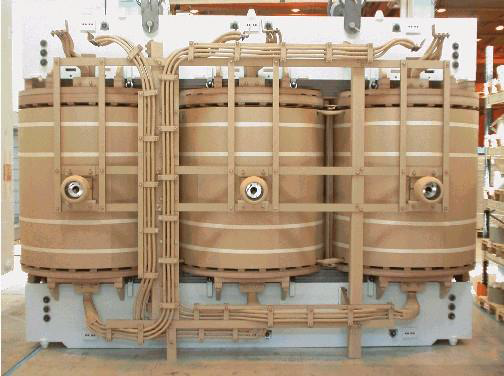
The active part of a power transformer.
This “transformer hum” originates as vibrations in various parts of the device. The contributing factors are the metal core that has coils wound around each section, protective tank, and insulating oil inside the tank. The alternating current passing through the coils creates magnetic fluxes that cause mechanical strains in the magnetostrictive core. Since the magnetic fluxes alternate direction, the core grows and shrinks rapidly. This generates vibrations that propagate through the insulating oil to the tank and the core’s attachment points. The alternating currents also create load noise due to Lorentz forces in the coil windings.
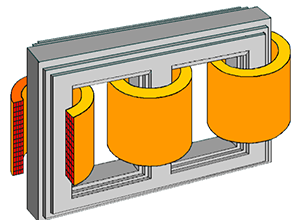
Model of ABB’s transformer design.
To find a way to keep transformer performance up while reducing the hum, a group of engineers from ABB, one of the world’s largest transformer manufacturers, simulated their design with COMSOL Multiphysics.
Simulating Multiphysics Phenomena in a Transformer System
At ABB’s Corporate Research Center (CRC), Mustafa Kavasoglu, Dr. Anders Daneryd, and Dr. Romain Haettel modeled a transformer in an effort to minimize the transformer hum. They simulated the electromagnetic, acoustic, and mechanical behavior of the transformer core, tank, and windings. Using several simulations, they looked at the magnetic flux in the core, displacements caused by magnetostrictive strains in the core, and Lorentz forces in the coil windings.
The team also calculated the pressure levels in the tank resulting from acoustic wave propagation. This allowed them to model the sound levels in the oil and the surrounding environment as well. Finally, they modeled the mechanical displacement of the coil windings and the surface pressure on the tank walls.
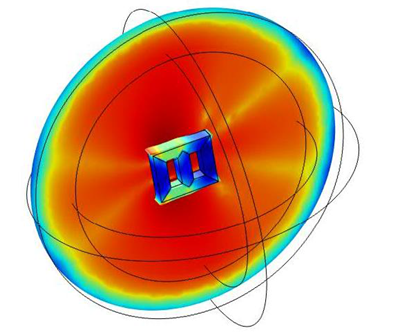
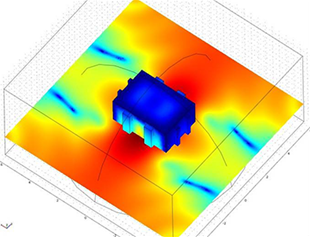
Left: Sound pressure levels around the transformer core. Right: Sound pressure levels around the tank and the displacements of its walls.
Once the engineers completed their multiphysics model, they optimized their transformer designs by adjusting factors such as the core and windings setup, geometry of different components, and material properties.
Spreading Computational Analysis Capabilities to the Rest of the Company
After analyzing the interconnected physics in the transformer system, Kavasoglu, Daneryd, and Haettel built several computational simulation apps from their completed models by using the Application Builder in the COMSOL® software. They use these apps to share the analysis capabilities of their model with the business unit as well as other ABB engineers. These apps simplify the testing and verification process by allowing others to model different transformer designs without needing to understand the original model.
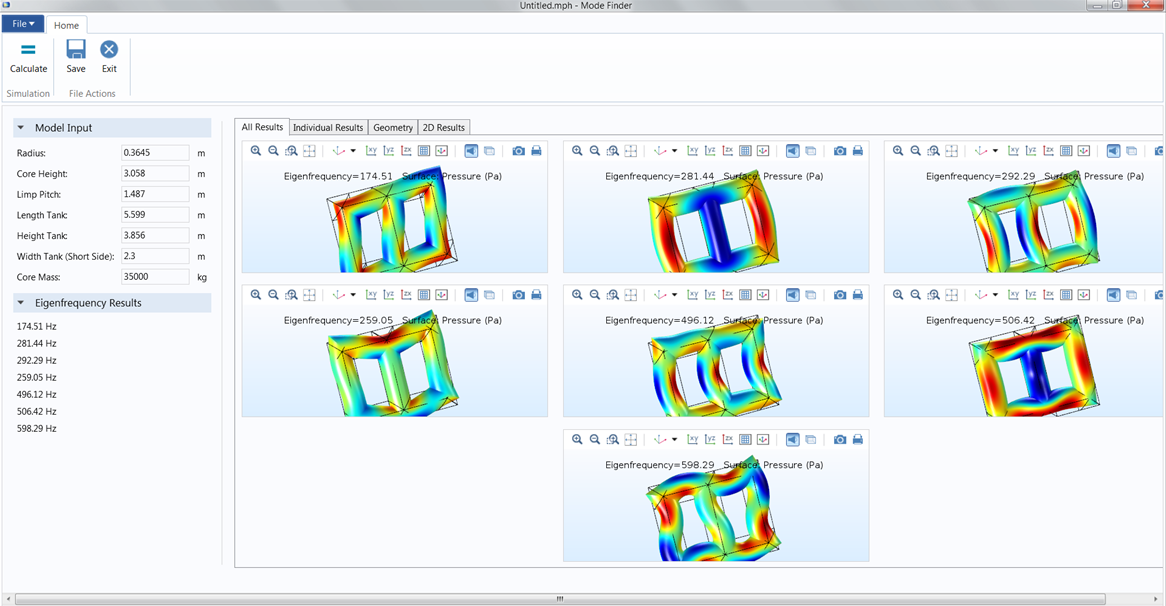
A simulation app created by the ABB CRC team.
Making simulation available to everyone helps different teams and departments more easily perform development work, especially since an app can be adapted to meet specific requests. The ABB CRC team is also building an app to calculate load noise, which will allow sales and design engineers to run virtual tests without digging into the model, removing tedious calculations. With these apps, ABB will be able to create powerful transformers that produce less noise.
Read More About Designing Transformers with Multiphysics Simulation
- Want to model your own transformer? Check out this step-by-step tutorial:
- Read other user stories in COMSOL News 2016



Comments (0)